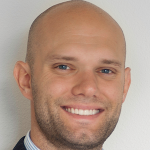Below, Jon Levy shares five key insights from his new book, Team Intelligence: How Brilliant Leaders Unlock Collective Genius.
Jon is a behavioral scientist. For the last 15 years, he has studied what makes leaders and teams succeed, working with everyone from Nobel laureates to Olympic captains and Fortune 500 executives. He is also the founder of The Influencers, a one-of-a-kind private dining club with thousands of members, many of whom are some of the world’s most respected leaders.
What’s the big idea?
Success isn’t about raw talent or a single heroic leader. It’s about how we align, focus, and unlock the resources within our teams. Intelligent teams create cultures that let people thrive together.
1. Why star talent fails.
We’ve been taught that the surest way to win is to gather the most talented people. But stacking a team with stars doesn’t guarantee success. In fact, it often undermines it.
Take the 1980 U.S. Olympic basketball team. They were just college kids, facing NBA All-Stars in a series of exhibitions. On paper, the pros should have crushed them. Instead, the college players won four out of five games, including one by 31 points. The less talented team consistently defeated the stars.
Business tells the same story. Quibi was a short-form streaming platform, led by Disney’s Jeffrey Katzenberg and eBay’s Meg Whitman. It raised nearly two billion dollars, but leadership was so insulated and overconfident that they ignored feedback. The company shut down within months.
Or DaimlerChrysler. In 1998, Mercedes’ parent company merged with Chrysler in what was billed as the perfect match of German engineering and American scale. Instead, cultural clashes and competing egos derailed the merger, wiping out billions in value.
Psychologists call this the “too-much-talent problem.” When too many stars are in the room, cooperation breaks down and performance collapses. Skill is just the ticket to play. What really matters is how people work together. Teams win not because they have the best individuals, but because they combine their efforts into something greater than the sum of their parts.
2. The myth of the perfect leader.
When we think of great leaders, we often imagine someone charismatic, visionary, maybe even larger than life. But the surprising truth is that there are no universal traits of leadership.
For more than a decade, I’ve hosted a series of dinners. The format is simple but unusual: twelve strangers come together to cook a meal, and until we sit down to eat, nobody is allowed to talk about their careers or even share their last names. When we sit to eat, people reveal they are Nobel laureates, astronauts, Olympic captains, CEOs, and Grammy-winning musicians. Over the years, I’ve connected with some of the most accomplished leaders on the planet, and what strikes me is that there is no single personality profile that is common to all these leaders. Some are introverts who prefer quiet reflection. Others are outspoken and brash. Some are methodical planners, while others thrive in chaos. If it’s not about personality, what makes someone a leader? The answer, by definition, is that they have followers.
“Leaders give us the feeling of a new and better future.”
So, why do we follow? The answer isn’t something as easy to pin down as vision or charisma. Instead, it’s an emotional response. Leaders give us the feeling of a new and better future. When we interact with them, they cause us to feel that tomorrow will be better than today.
But there aren’t any specific skills that cause this. Maybe you’re brilliant at solving problems under pressure, or maybe you’re the person who can think at scale and move fast. It’s not about being well-rounded, it about your unique super skill being enough for people to believe that with you, the future is worth pursuing. Find the strengths that make you effective and use them to create a vision that others want to join. That’s what real leadership looks like.
3. The three pillars of team intelligence.
In the early 2000s, LEGO was in serious trouble. The company had expanded into video games, clothing, and even theme parks, but in the process, it lost sight of what made it special. LEGO was drowning in debt and close to bankruptcy.
That’s when they brought in Jørgen Vig Knudstorp, a former McKinsey consultant with a background in organizational behavior. Knudstorp didn’t try to rescue LEGO by chasing bold new ideas or hiring more star executives. Instead, he focused on building the conditions that allowed the teams they already had to succeed.
What he put in place mirrors what I call the three pillars of team intelligence:
- Reasoning: Alignment around clear goals.
Knudstorp got everyone back to LEGO’s core mission of inspiring creativity through play, not distracting side ventures.
- Attention: Knowing when to collaborate and when to focus.
LEGO teams had to learn when to come together intensely on critical decisions, and when to step back so designers and engineers could innovate without constant interference.
- Resources: Unlocking and empowering the talent already inside the company.
LEGO had world-class designers and engineers, but their best ideas were being buried under corporate bloat and scattered priorities. By elevating and focusing those creative resources, the company rediscovered the very expertise that had always been its greatest strength.
Knudstorp sold off the theme parks, cut the side businesses that drained attention, and redirected investment back into the bricks. Most importantly, he gave designers and engineers the freedom to create again. That shift produced runaway successes like LEGO Star Wars, LEGO Harry Potter, and Bionicle. By aligning goals, sharpening focus, and empowering internal talent, Knudstorp rebuilt LEGO from the brink of collapse into the world’s most valuable toy company.
Individual talent matters, but what really makes teams thrive are the systems that guide how people align, communicate, and unlock the resources they already have.
4. The super chicken problem.
If you’ve ever worked on a team full of high achievers, you’ve probably seen this play out. People compete for airtime, ideas clash, and collaboration takes a back seat to ego. The assumption is that more talent should always mean better results, but research shows the opposite is often true.
Decades ago, biologist William Muir at Purdue University ran an experiment with chickens to test productivity. At the time, the most productive egg-laying chicken was the Dekalb XL. This was like the Ferrari of chickens. It could outlay anything, but the focus on pure productivity during breeding led it to become violent. After all, the only way to become more productive at a certain point would be to peck other chickens to get their resources.
Muir believed that you could have chickens that were very productive and humane. So, he took an average crossbred chicken, created 200 coops, and would have them work together in small groups to lay eggs. Those that laid the most eggs were rebred generation after generation.
“The assumption is that more talent should always mean better results, but research shows the opposite is often true.”
After six generations, Muir set up an experiment to see who was more productive: a coop of the super chickens, the Dekalb XLs, or his kinder, gentler birds. Muir’s kinder, gentler birds, bred both for pro-social behavior and productivity, beat the DeKalb XLs by a long shot. Mostly because, due to pecking each other to death, only three Dekalb XLs remained at the end of the experiment.
When you stack a team entirely with stars, competition overwhelms cooperation. Studies in sports also show that teams overloaded with superstar players often underperform. The same holds true in business: companies built around celebrity CEOs or elite hires often stumble because the team dynamic collapses under the weight of competing egos.
Success is about creating conditions where people can thrive together and collaboration, trust, and shared purpose matter more than individual stardom.
5. The Miami Heat and the power of culture.
In 2010, the Miami Heat pulled off what looked like the greatest talent coup in NBA history. LeBron James, Dwyane Wade, and Chris Bosh—all superstars—joined forces. At the announcement, LeBron famously promised multiple championships.
But then, they lost. Raw talent wasn’t enough. The Heat had assembled the crew, but they hadn’t figured out how to make them work together as a team.
That changed when Shane Battier joined the roster. To this day, it would be easy not to notice that he was on the team. Battier wasn’t flashy, he didn’t dominate the highlight reels, and his stats looked modest. But his teammates called him a “no-stats all-star” because he had a unique ability to elevate everyone else’s game.
“Even in teams stacked with stars, it’s often the glue players, the ones who make everyone else better, who determine success.”
Battier studied opponents obsessively, knew when to set the perfect screen, and often took on the toughest defensive assignments. He was even nicknamed “Lego,” because when he was on the court, everyone else clicked into position. His presence allowed LeBron, Wade, and Bosh to maximize their talent, and the championships followed. Even in teams stacked with stars, it’s often the glue players, the ones who make everyone else better, who determine success.
Don’t just chase superstars. Value the people who connect the pieces, create trust, and turn potential into performance. They’re the difference between a team that stumbles and one that builds a dynasty.
Enjoy our full library of Book Bites—read by the authors!—in the Next Big Idea App:










